Vinefields and King's Orchard
/
Vinefields and King's Orchard
December 3, 2022
The planting of 100 vines by the Cathedral’s Head Gardener, assisted by Simpson Wine Estate, is recreating the medieval vineyard once within the area now known as King’s Orchard.
When King Æthelberht donated the land on which the Cathedral is constructed in 604 AD he included in his gift the entire south-east quadrant of the walled city. This large portion of land was enclosed on the east by Doddinghyrne, roughly corresponding to the site of Boley Hill, on north by Street (the High Street) and to the south and east by the Roman city wall. The land was probably relatively clear of structures, comprising the area abutting the city wall. There are no surviving references to the use of the land before the Norman Conquest, although a significant portion was likely given over to an extensive graveyard (read more about the Anglo-Saxon Cathedral).
Bishop Odo (Earl of Kent and brother of William the Conqueror) is reputed to have given land to the monks, outside the city walls as they then stood, for further gardens and vineyards which became known as Vinefields.
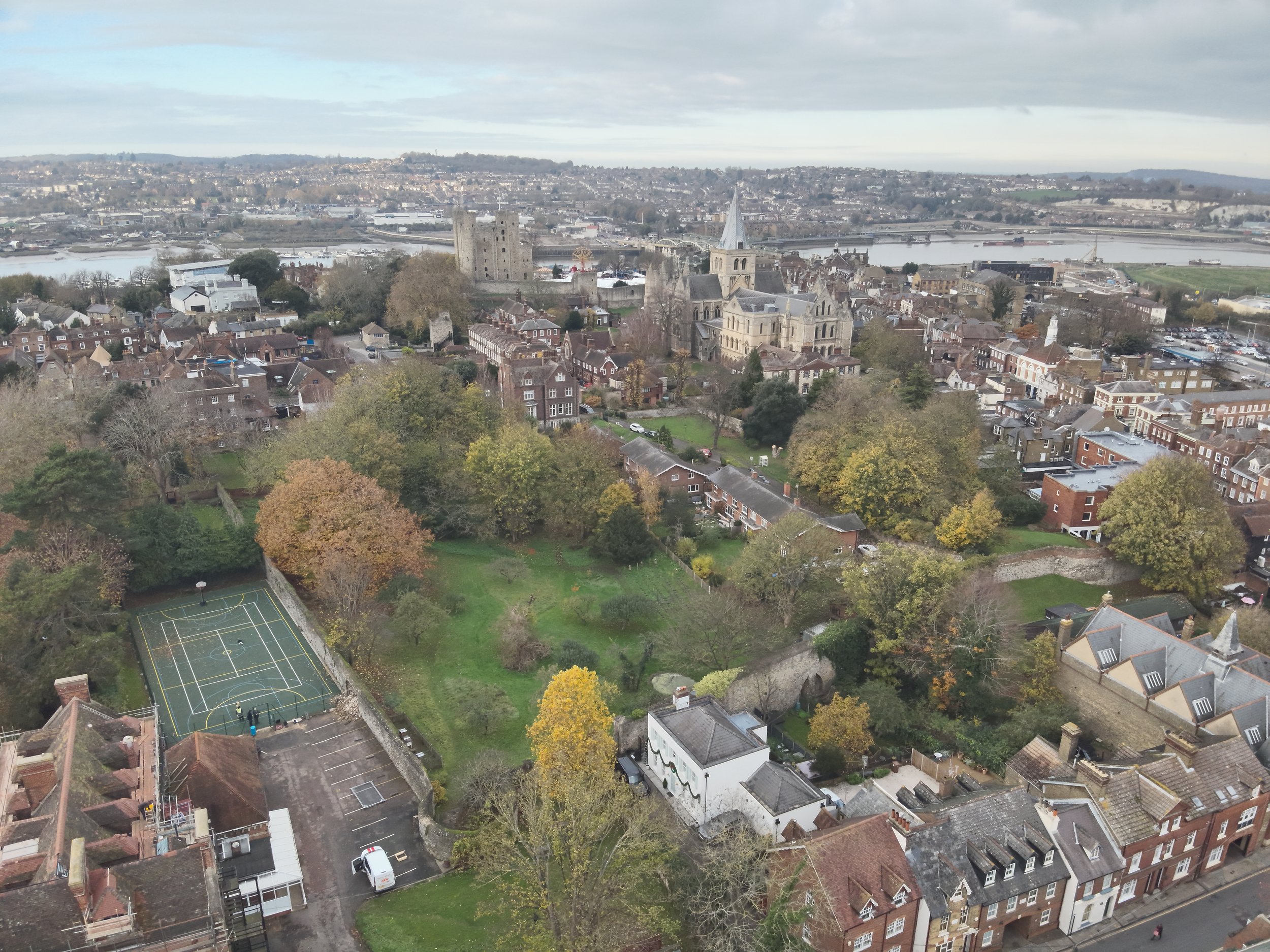
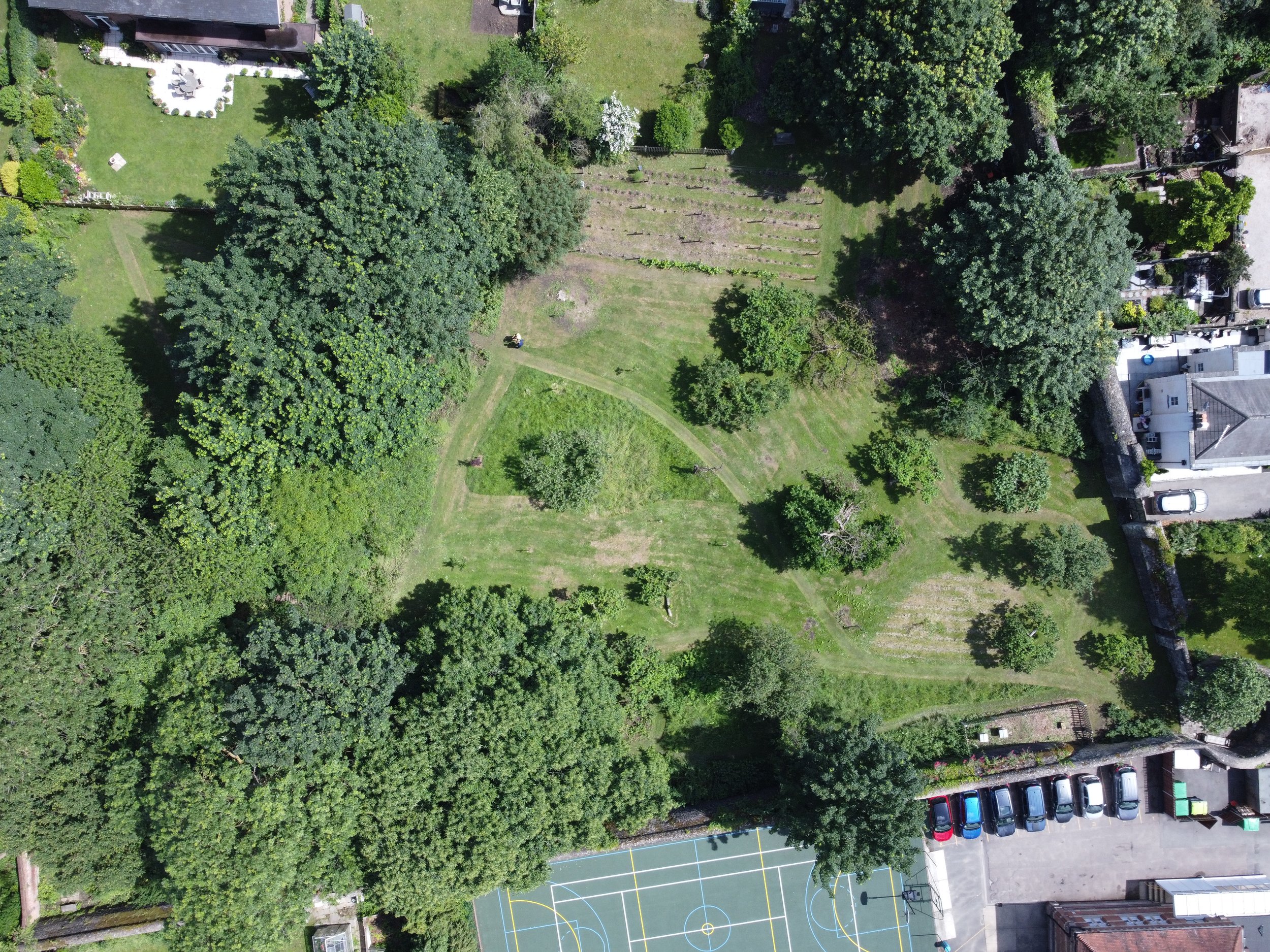
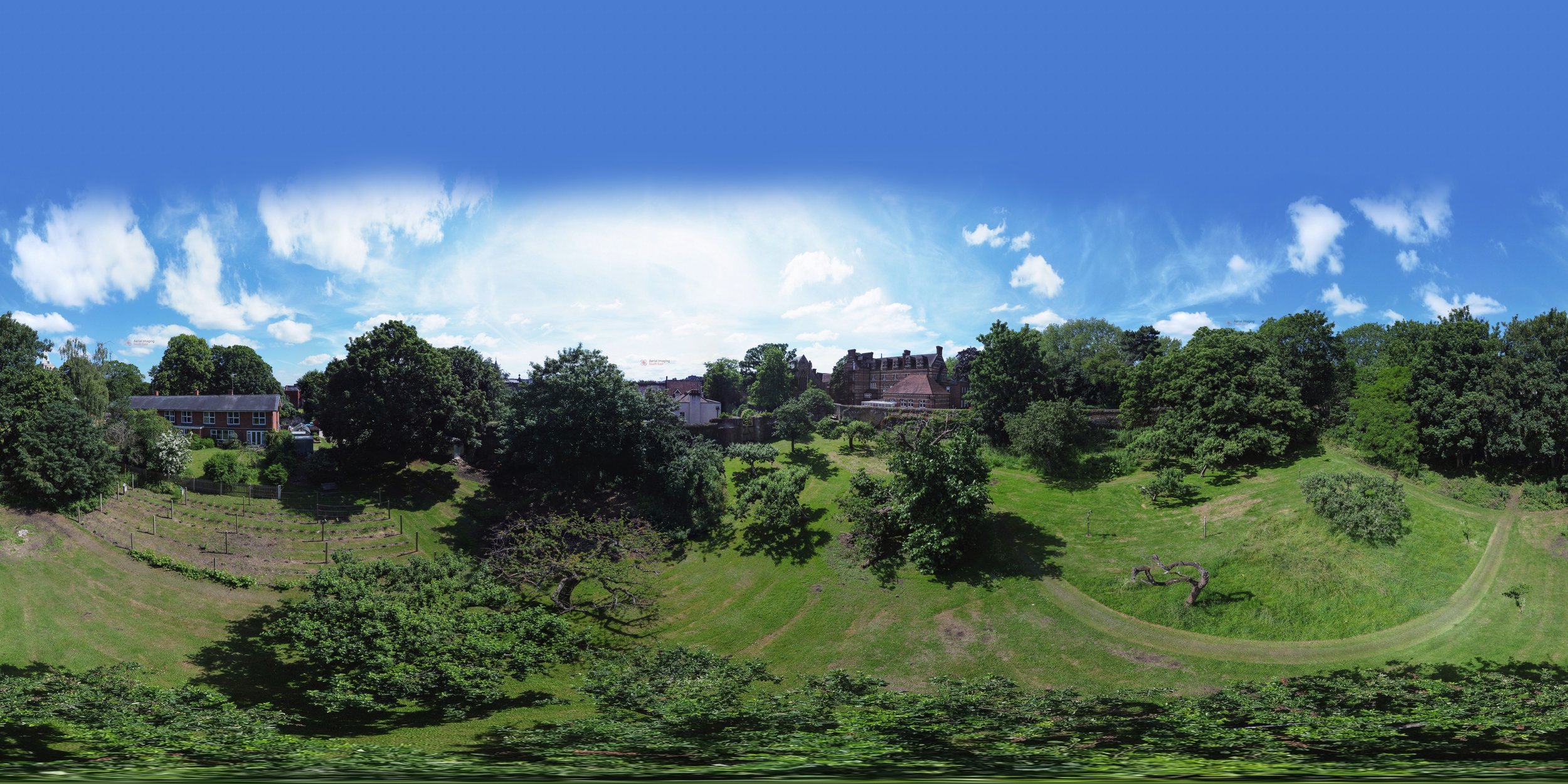
Aerial photos of King’s Orchard to the east of the Cathedral, by Geoff Watkins, Aerial Imaging South East.
Although traditionally monks are not known to have made wine, there is clear evidence from several charters in the Registrum Roffense (1319-1352) that Rochester Priory had a vineyard. John Worlidge wrote later in his Vinetum Britannecum (1767) that:
‘Great quantities of grapes grew here, and produced fine wines; Bishop Haymo de Hethe presented king Edward II (who was then at Bockinfold) with a taste of his wine (C1340).’
The vineyard was turned over to pasture after the dissolution of the Priory (Salter). Today the public gardens known as The Vines - just over the south priory wall - takes its name from this legend.
King’s Orchard
Gundulf divided the existing cathedral property between the new Priory and the bishopric. The modern road ‘The Precincts’ marks this boundary. The landscape within the south-east corner known as King’s Orchard is dominated by the Great Ditch of 1225, which today forms steep north and south-facing slopes.
3D model of King’s Orchard, showing the ditch of 1225. Photography by Aerial Imaging South East.
After the dissolution of the priory in 1540, the cloistral buildings and land were appropriated for use as a palace by King Henry VIII. After a time the buildings were handed back to the newly formed Dean and Chapter, although the name King’s Orchard for the portion forming the east of The Precinct stuck. King’s Orchard is still home to some very old apple trees and may have seen continuous use throughout the period.
King’s Orchard Vineyard project
In 2020 the Cathedral Gardeners planted a vineyard within King’s Orchard to reflect the wine-making heritage of the Cathedral Priory. The north slope of the Great Ditch forms a perfect south-facing slope to provide sun. Two varieties of vine will produce Pinot noir or Pinot blanc grapes. The first significant harvest is expected at the end of 2023.

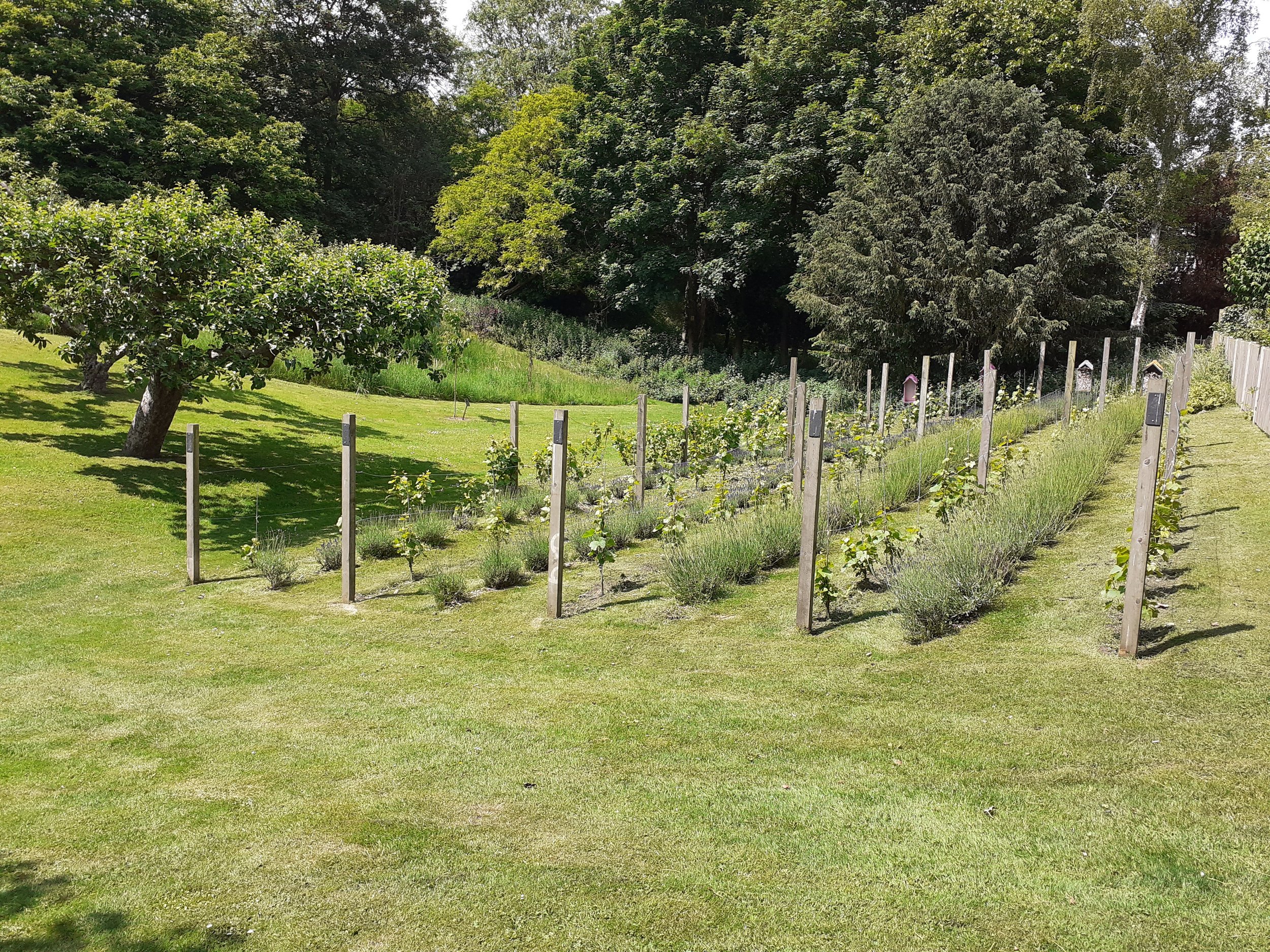
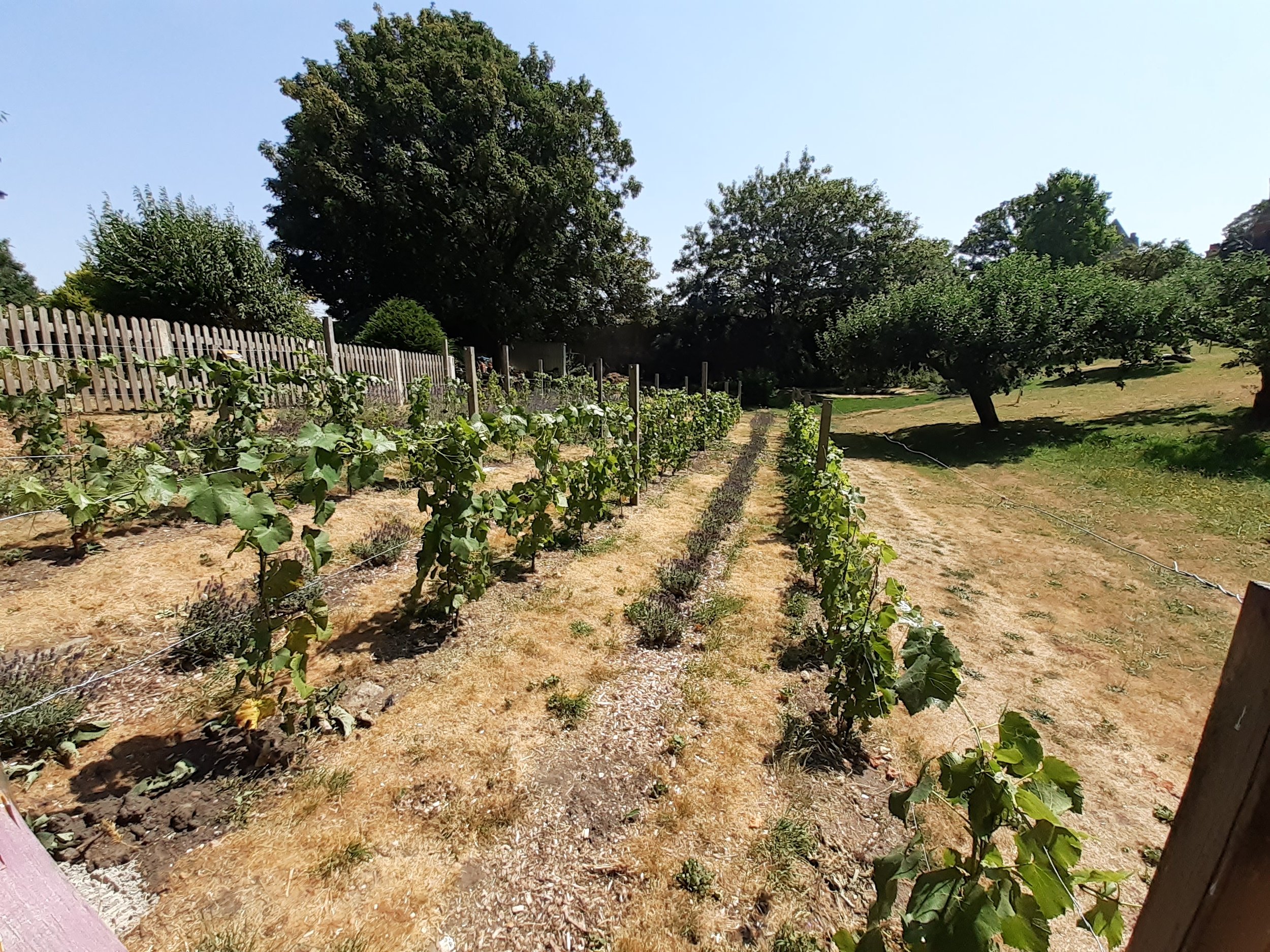
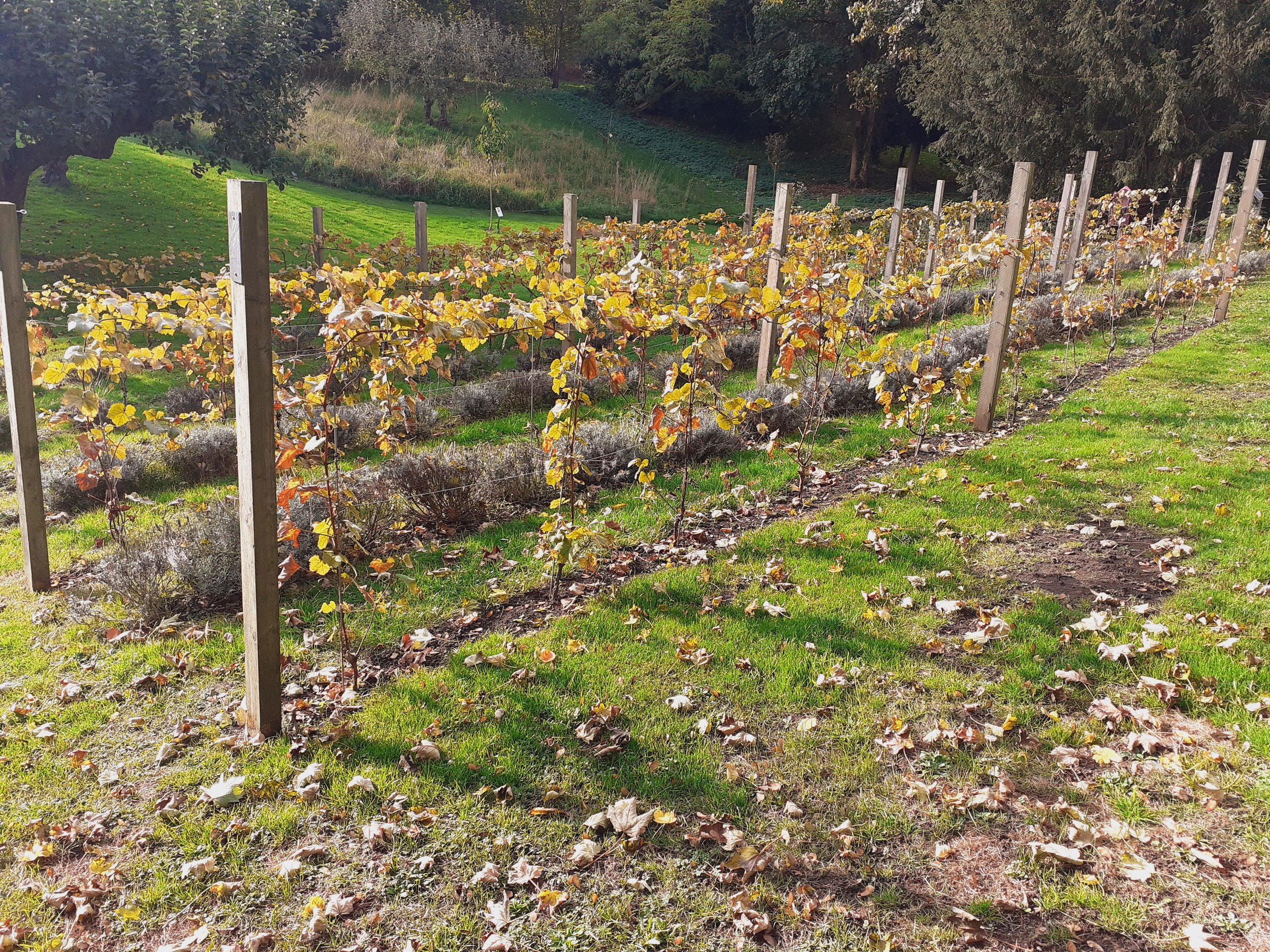
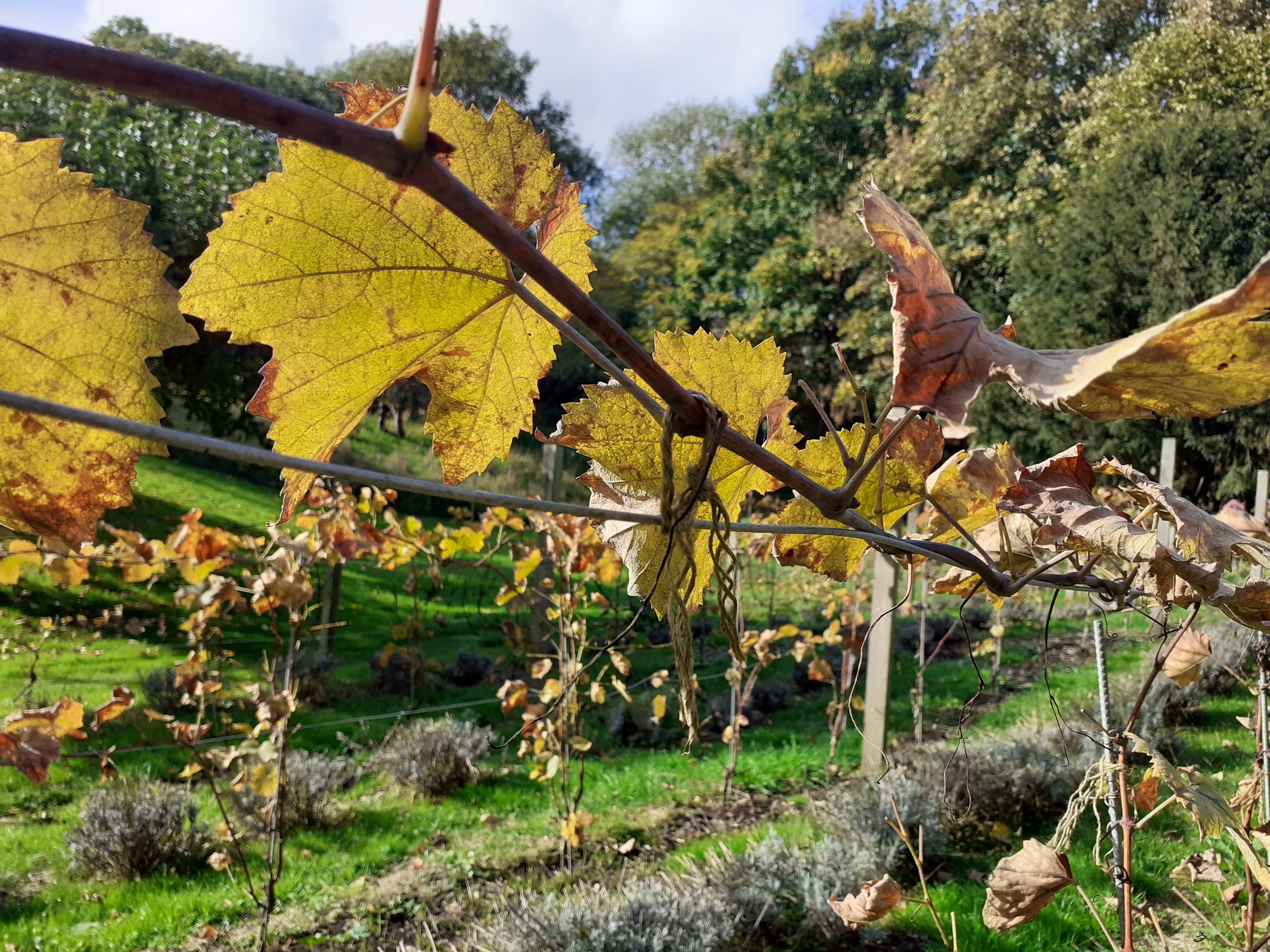

Photos by by Graham Huckstepp of the progress of the vines over the seasons.
The vineyard will produce sparkling Rosé wine, Pinot noir and Chardonnay produced in the Champagne method.
Jacob Scott in discussion with Graham Huckstepp,
Head Gardener
Explore the history and archaeology of the Priory of Saint Andrew and find out more about green heritage at the Cathedral.




